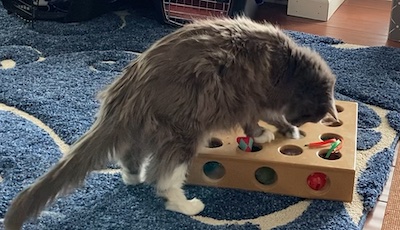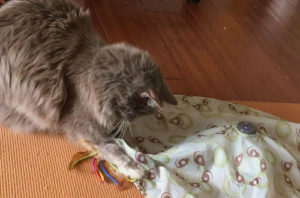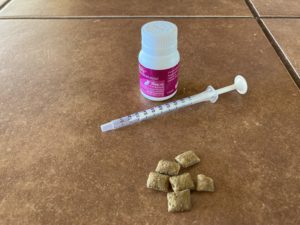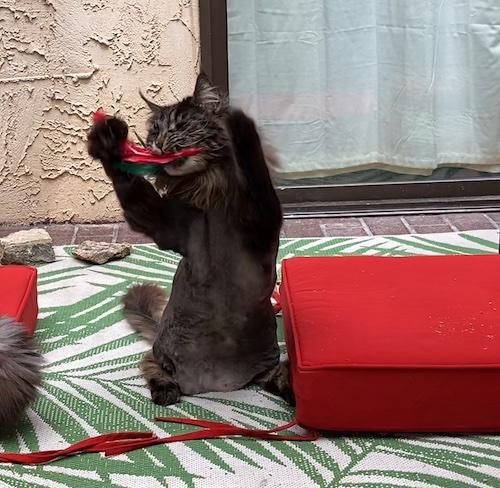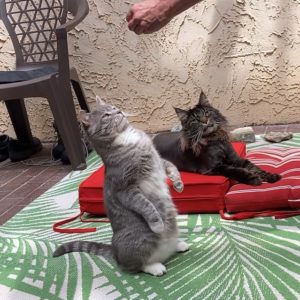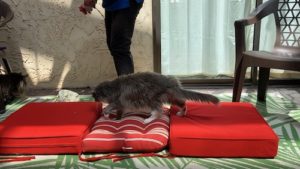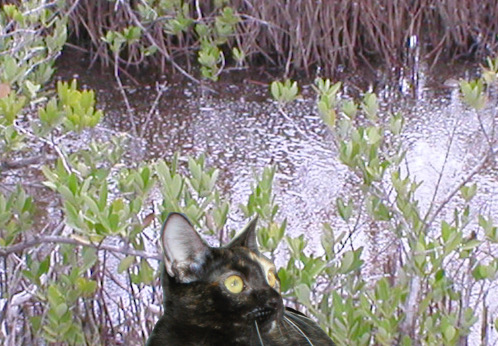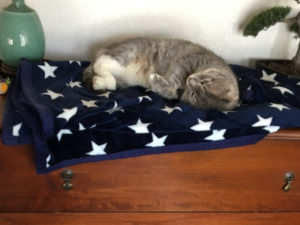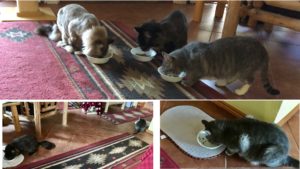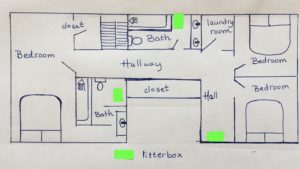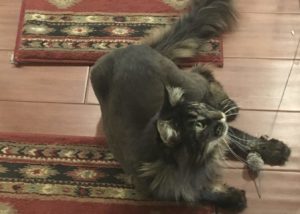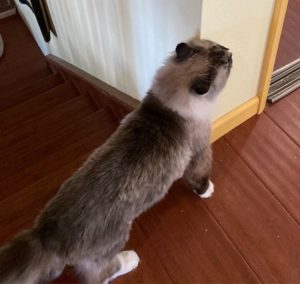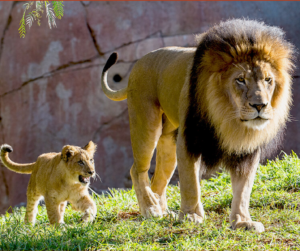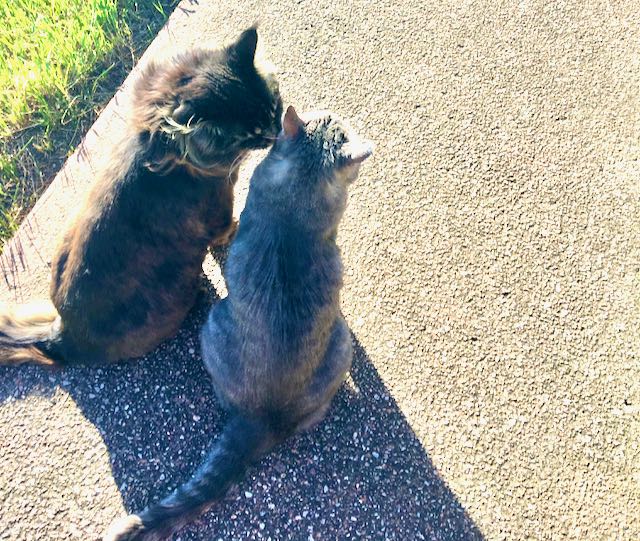Clicker training your cat pairs the sound of the clicker, a small handheld gadget, with a treat or some other thing the cat likes. When the cat hears the click, he knows that a treat or something good is on its way. If the cat sits when he hears the word “sit” and hears a click as he sits, he will look for his expected reward. If he receives the reward, he will be more likely to “sit” next time upon command.
At the core of clicker training your cat are two learning processes: classical conditioning and operant conditioning. Let’s look at these two ways of learning.
Classical Conditioning – An involuntary response is associated with a stimulus
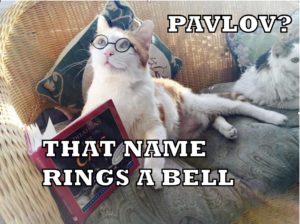
During the 1890’s, a Russian scientist, Ivan Pavlov was studying digestion in dogs, measuring the amount of saliva produced by a group of dogs presented with meat.
Pavlov noticed that:
- the dogs would drool when food was placed in front of them
- they would also drool before they received the meat, when they heard the footsteps of the assistant bringing the meat.
This started a series of experiments using lights, metronomes and, of course, bells to stimulate the drooling. Pavlov had discovered the learning process that we now call “classical conditioning”, where an involuntary response like salivating is associated with a stimulus, the ringing of a bell.
Operant conditioning – A voluntary behavior is associated with aN outcome
Likewise, snapping the lid off a can of cat food can help call the kitties to dinner. The dogs connected the ringing of the bell with food; your cats may be accustomed or conditioned to associate the sound of the can opening with being fed. This is another example of “classical conditioning”.
Your cat has heard the can opening. Now, he must decide whether he is going to come for dinner. Most of the time, he makes the decision to come when “called”, anticipating a dinner of cat food. This “voluntary” response is the learning process called operant conditioning – the cat has control over whether he comes or not.
Folks who study behavior have identified 4 different scenarios in operant learning: 2 that increase the likelihood that the behavior being trained will be repeated and 2 that decrease the likelihood that the behavior is repeated.
operant conditioning – 4 scenarios
INCREASE THE BEHAVIOR
POSITIVE REINFORCEMENT

ADD a good outcome – the cat is likely to perform the behavior again.
We ask the cat to “sit” and when he sits, we give him a tasty treat. We REWARD the behavior of sitting.
DECREASE THE BEHAVIOR
POSITIVE PUNISHMENT
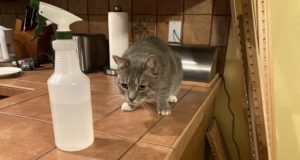
ADD something unpleasant to discourage a behavior.
Your kitty jumps up on the counter and you spray her with water. She jumps down. You have added an unpleasant spray of water (punishment) to getting up on the counter.
negative reinforcement
TAKE AWAY something unpleasant- the cat is likely to do what stops what’s unpleasant.
You are trying to trim your cat’s nails but the moment you touch her foot with the clippers, she growls and hisses and you stop. It is likely next time, she will growl and hiss to stop you from trimming her nails. You are reinforcing her behavior of hissing and growling at nail trims by “removing” the unpleasant nail trim.
negative punishment
TAKE AWAY something the cat likes to discourage a behavior.
Your cat wakes you up at night to be petted. You put her outside the bedroom and close the door. You are removing the opportunity for some stroking that your cat enjoys with the hope that your cat will not wake you up in the future.
THE PROBLEM WITH positive PUNISHMENT
- It is difficult to get the timing right – you must spray the cat as she is jumping on the counter otherwise she may associate something else (you) with the spray of water
- Punishment does not remove a behavior. There is an immediate effect – kitty jumps off the counter – but she may continue to jump on the counter if you are NOT there to spray her.
- Devices like a SSSCAT (a motion-activated spray system) may keep her off the counter as long as they are working. A concern with these devices is injury if the cat is startled and falls off the counter.
- Punishment can put the cat into an anxious, fearful state, anticipating a consequence (punishment) the cat does not understand.
“Classical” conditioning and “operant” conditioning with positive reinforcement form the core of clicker training your cat.
- The cat learns to associate the “click” of the clicker with food or something he values.
- He will choose to perform a behavior, like sitting upon command, anticipating a treat.
Positive reinforcement is the most successful training technique because the cat will not be fearful or anxious but will be in a positive emotional state, ready to learn – after all, something good will happen!
A POSTSCRIPT
What to try if your cat hates nail trims
Positive reinforcement!
- Start by handling her feet and giving her a treat for each paw you pick up.
- Move on to touching her feet with the nail clippers, and give her treats for each paw.
- Work up to trimming a few claws at a time, and of course, reward her!
Counter Surfing
With kitchen counters, the drive to seek food is strong and difficult for a cat to suppress. Also, cats instinctively, “go for the high ground”, especially if they are avoiding something they are leery of.
- Is your cat jumping on the counter to get food or avoid the dog and the toddler? You may need to control the dog or toddler.
- Keep food off the counters unless you are preparing it.
- Find a place (preferably high) for kitty to sit while you are working at the counter and reward him for sitting there.
- Sometimes, using “aversives”, things cats don’t like, may help. For example, using a non-toxic citrus spray on the counter or using an upside-down carpet runner (with the “spikes” facing up) may deter jumping up on the counter.
- If your cat is driving you crazy or may get hurt, put him in a safe place with all his resources while you prepare food.
Want to learn more about the world of cats? Subscribe to The Feline Purrspective!
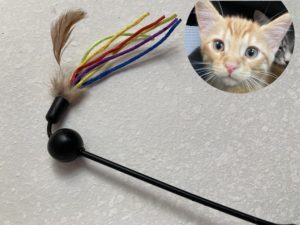

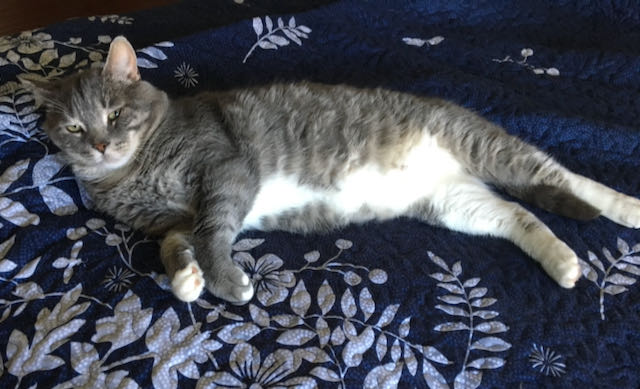
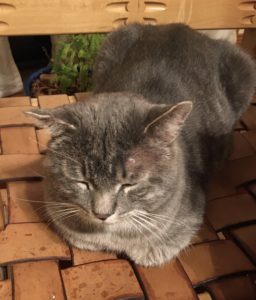
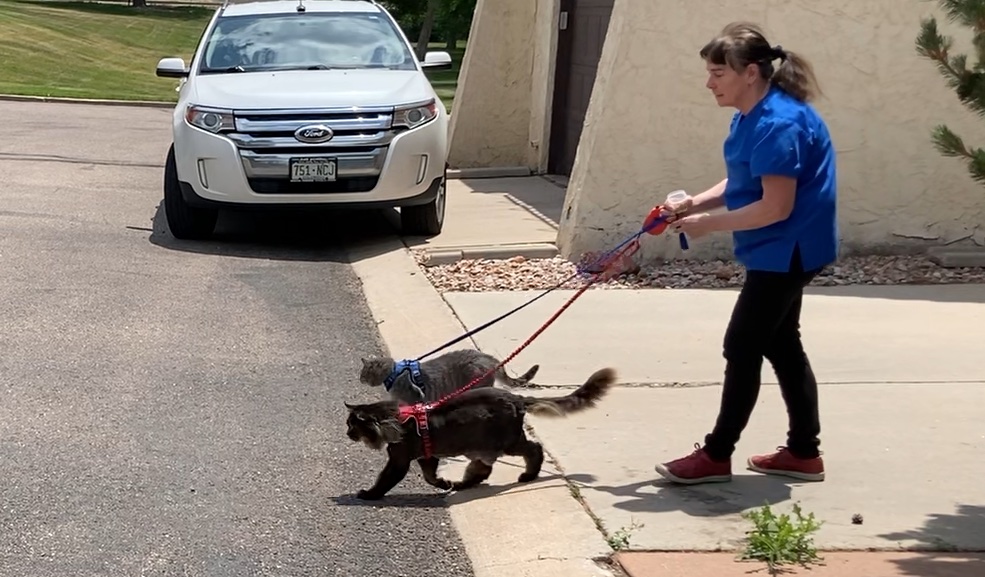
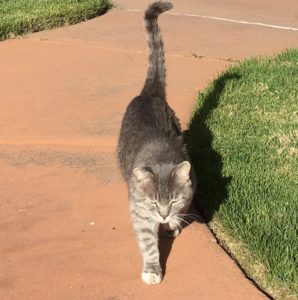 Indeed, we are more familiar with dogs’ body language than that of cats. People see dogs as more social than cats. Someone getting a puppy will plan to take it places, walk it and play with it.
Indeed, we are more familiar with dogs’ body language than that of cats. People see dogs as more social than cats. Someone getting a puppy will plan to take it places, walk it and play with it.